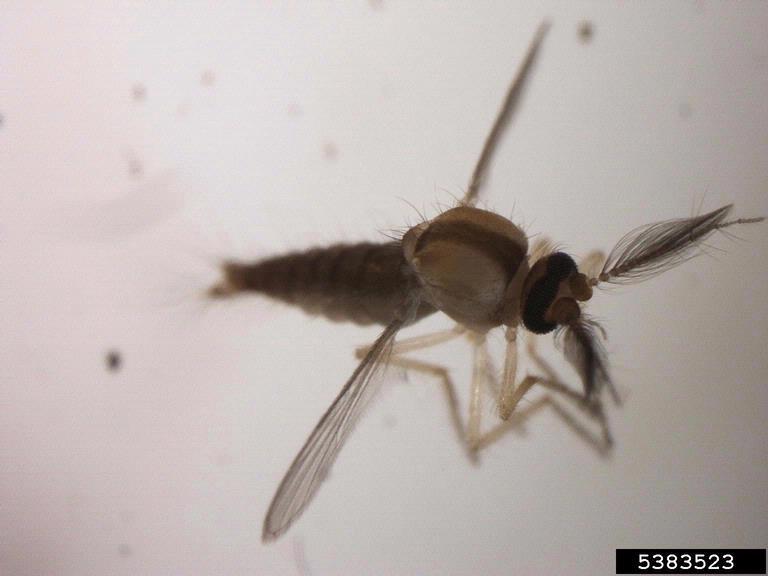Biting Midges and Schools
On this page:
Basics

Photo Credit: Charles Olsen (USDA/APHIS)
Biting midges are small, gray, two-winged insects, less than 1/8” long. They are a significant human pest and are found throughout the United States, primarily in coastal areas and farming operations. Some species occur mainly in wet mud, mangrove swamps and salt-marshes.
Only the female bites and takes blood using an elongated jaw with small cutting teeth. Feeding takes approximately 2-5 minutes if undisturbed. The greatest activity of biting occurs during dawn and dusk, may continue throughout the night, but rarely occurs during the day unless overcast with little wind.
Life Cycle: Biting midges lay minute eggs in the shape of a cigar or sausage. The eggs are black. Egg count varies depending on species and size of blood meal, but generally range from 25-100 per blood meal. Eggs cannot survive in dry environments and take about 3-5 days to hatch in 80°F weather. Once hatched, larvae develop through four life cycle stages, which can vary greatly in time based on temperature and season.
Health Concerns
Biting midges are a known transmitter of Mansonella ozzaqrdi, a human nematode parasite.
Integrated Pest Management (IPM) Strategies
The rapid life cycle makes it difficult to affect population density. IPM strategies for prevention of bites include:
- Avoiding activity outside during peak hours (i.e., dawn and dusk).
- Increasing air movement in areas frequented by people.
- Treating screens with barrier sprays or portable foggers effective against biting midges (see label).
- Using spray repellants approved for biting midges if outdoors (see label).
Read more at: Biting Midges of Coastal Florida Exit - University of Florida fact sheet
